Re-Babbitting the crosshead (Fall 2008)
So what's a crosshead and why does the 700 have them? As the piston shaft pushes (or pulls) on the main rod, there is a transverse (off-axis) force at the point of connection between the piston shaft and the main rod when the shaft and rod are not in a straight line. The purpose of a crosshead is to absorb that transverse force and prevent it from acting on the piston shaft, forcing the piston against the cylinder wall. Since steam locomotive pistons are double-acting, the shaft slides through a seal at the rear of the cylinder. So the crosshead is really about protecting the seal, piston shaft and cylinder walls.
A crosshead slides back and forth in a crosshead guide. Together, they make a crosshead bearing. The crosshead transmits the transverse forces to the crosshead guide.
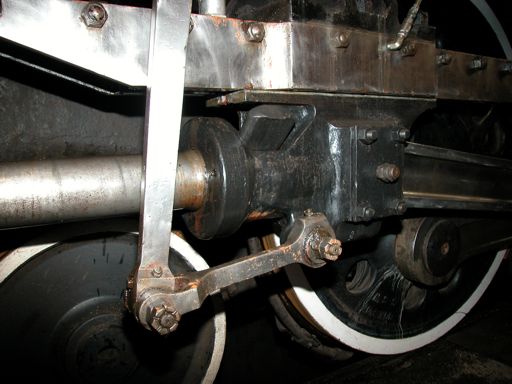
From left to right across the center of the picture are the piston shaft, the crosshead, and the main rod. At the rear of the crosshead is the cover plate for the wrist pin, which goes through the end of the main rod. The light colored metal running across the top is the crosshead guide. Photo by Terry Thompson.
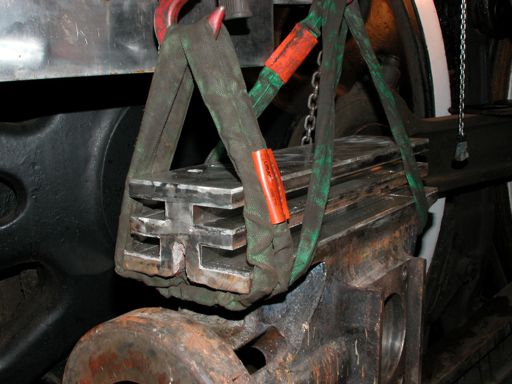
At the top of the crosshead are several flanges, which mesh with those on the crosshead guide. Photo by Terry Thompson.
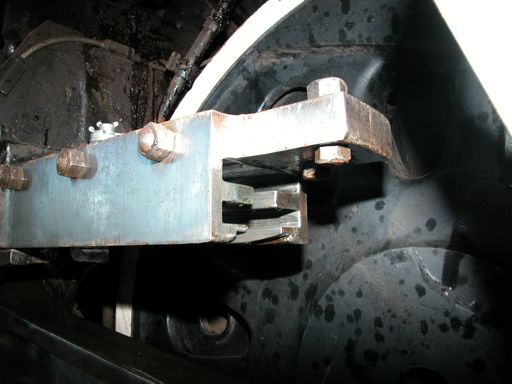
At the rear of the crosshead guide you can see the flanges that mesh with the crosshead. Photo by Terry Thompson.
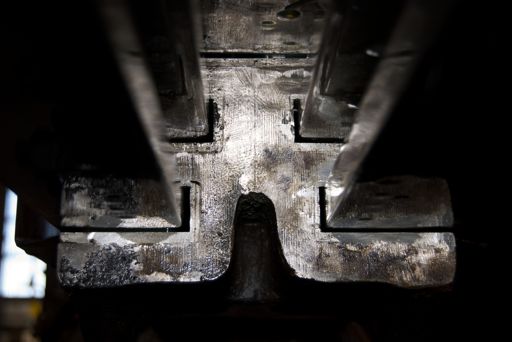
The crosshead and guide fit together like this. Photo by Chris Chen.
What is the purpose of putting Babbitt on a crosshead? Babbitt metal is an alloy whose properties make it useful in bearings. There are different Babbitts distinguished by the constituent metals and their proportions. Babbitts are available in numbers 1 through 4 in increasing hardness and resistance to wear. We used Babbitt #2.
Eventually the Babbitt becomes worn and must be replaced. This project was about such a replacement.
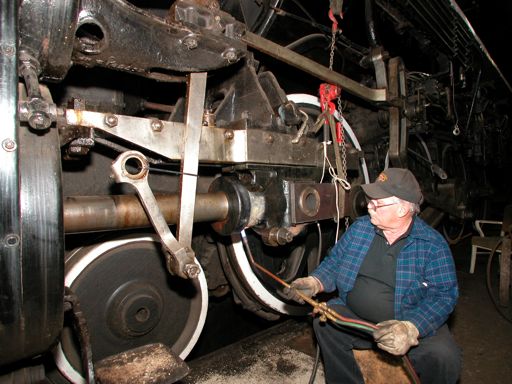
Removing the crosshead. The main rod has already been removed from the rear of the crosshead and the next task is to separate the piston shaft from the front of the crosshead. To the left of Roy Jones' face is a box that was attached to the crosshead and held in place with a pin. It holds a Porta-Power (hydraulic cyinder and piston) that presses forward on the shaft. Roy is appying heat with a torch to the crosshead to expand it and release the grip on the tapered shaft. The process is called "jumping the taper". Photo by Terry Thompson.
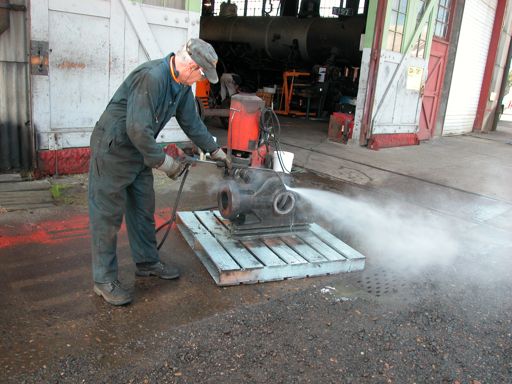
Steam cleaning the crosshead. Photo by Greg Kamholz.
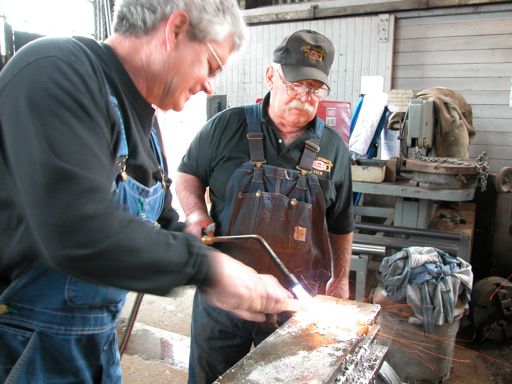
Removing old Babbitt.John Frazee scrapes while Roy Jones heats the Babbitt with a torch. Photo by Terry Thompson.
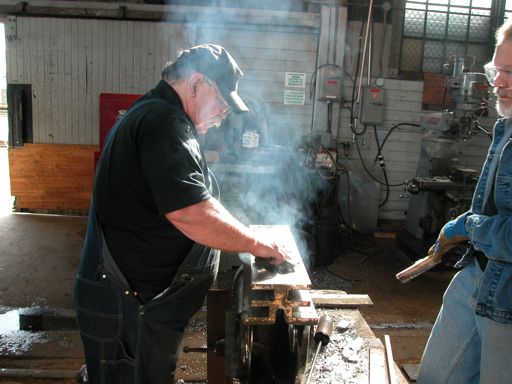
Tinning the crosshead. Roy Jones applies a thin layer of solder to help the new Babbitt adhere to the crosshead. Photo by Terry Thompson.
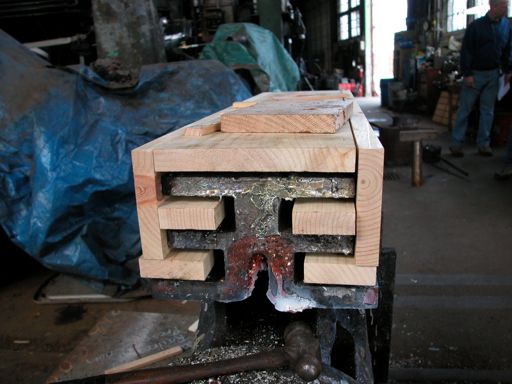
Building the wooden form for the Babbitt.The pine boards have been cut out, but not securely fastened together yet. The form is built to just leave gaps where the molten alloy will flow. Photo by Terry Thompson.
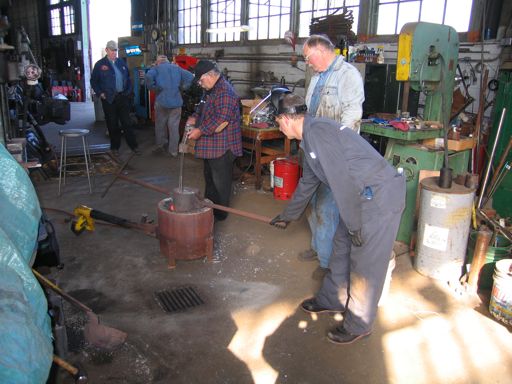
Heating the Babbitt. Roy Jones checks the temperature of the molten Babbitt while Mark Kliewe steadies the ladle. Photo by Greg Kamholz.
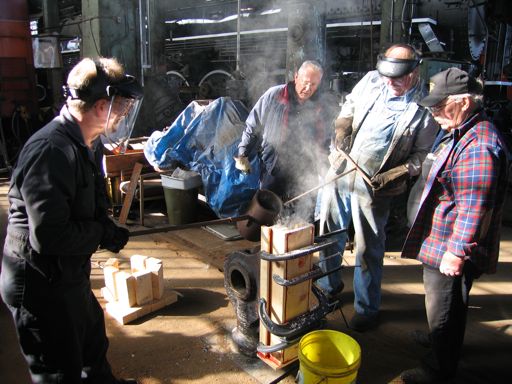
Pouring the Babbitt. Left to right, Mark Kliewe, Greg Kamholz, Dale Birkholz, Roy Jones. This is the second ladle heated in a separate furnace. The first ladle was larger. Photo by Scott Dally.
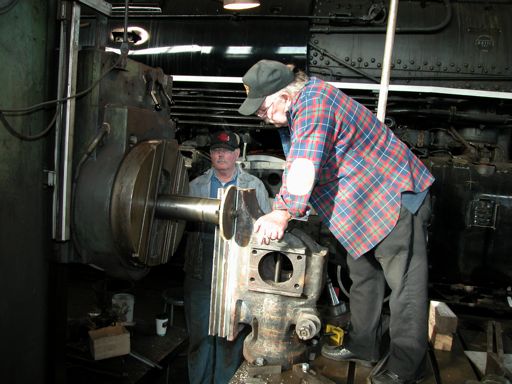
Machining the Babbitt. Dale Birkholz and Roy Jones operate the horizontal boring mill to machine the grooves to the correct width. Photo by Terry Thompson.
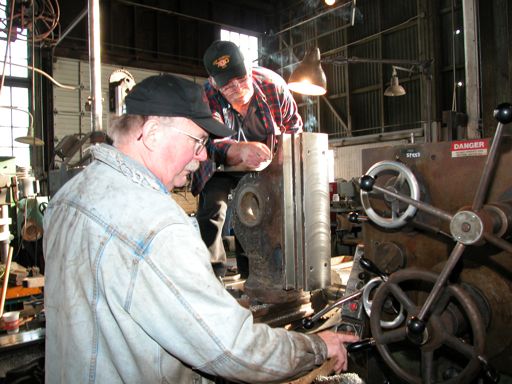
Roy and Dale confer about the next setting. Photo by Terry Thompson.